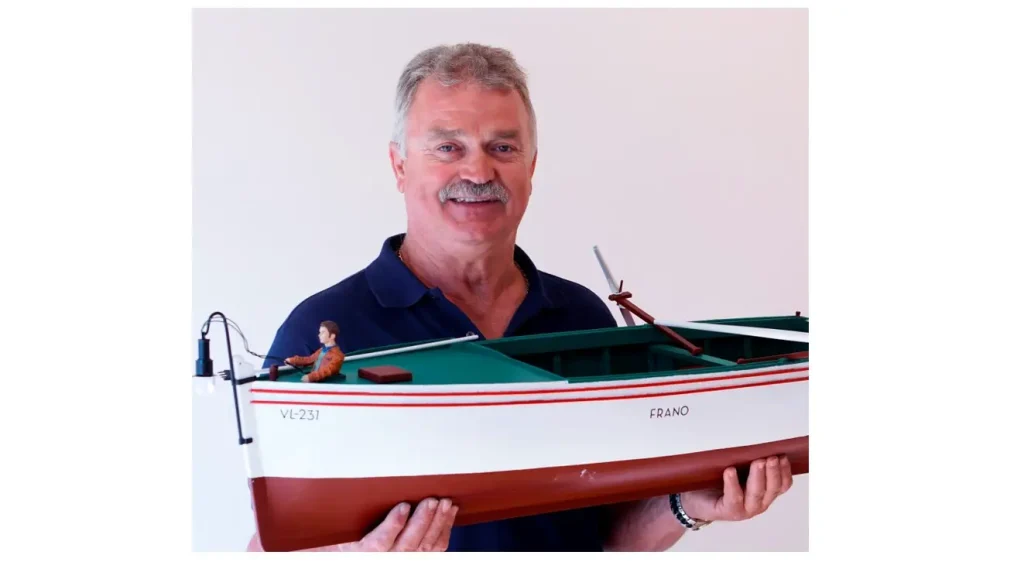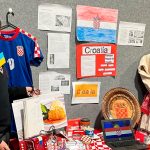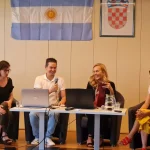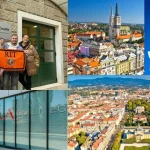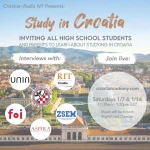The nostalgic, warm, ultimately feel-good read was sent to us by the author of the text originally published in Melbourne in Hrvatski Vjesnik (Croatian Herald), the largest circulating Croatian language (with English insert) weekly newspaper in the global Croatian diaspora. It runs about 7,000 copies and has a digital presence, too, including Facebook. The story features Frano Donjerković, a Croatian Australian living in Melbourne. Read on to feel like you want to return to your home in Croatia, even if it was never there.
The oasis of islands on the Croatian coast has been called “extreme magic,” an awake dream by Truman Capote.
Frano Donjerković left his village of Blato, on Korčula at the doughty and courageous age of 27, in search of a better life in freedom and economic prosperity, reaching the shores of Australia in 1986. Leaving his home, family and community was a painful and sorrowful experience, and the memories of his youth, family and place have followed him all his life in Australia. Croatia has always been his home as he built a new life in Australia. He lives and works in Melbourne, married to Marien with a daughter Daniela and son Anthony.
Korčula is a magnificent island of artificers, stone masons, wood masters, smiths, shipwrights, sculptors and farmers, wine and olive oil masters and fishermen. Above all else, they are sailors; everyone can sail a boat, but on Blato most can turn to and make one. Korčula also has one of the best water polo teams in the world and many Olympic players. Korčula played a significant role in shipbuilding and maritime affairs in the history of Croatia because of its strategic geographical location and industry of its population. The great sea powers of Europe wanted to control the narrow channel between Korčula and the Pelješac peninsula, especially on the route between Dubrovnik and Venice.
Blato was once the largest village in the country, boasting more than 12,000 residents in the mid-1920s after an economic boom. Frano Donjerković also recalls vivid stories of hardship and departure from his childhood. He remembers an event that affected Blato significantly, that in one afternoon in the early post-war period 1,200 residents left in search of a better life. Blato’s population today is significantly lower and there are an estimated three-time more people from Blato throughout the world, many in Australia.
There are many things in Frano’s life that are typical of the immigrant experience, from the pursuit of freedom and economic property, to raising a family in a place where everything seems foreign and unintelligible in a completely new language and idioms of speech and cultural habits. That has not stopped Frano Donjerković from being a valued, engaged, and leading member of the Croatian community and his broader Australian community. He is President of the Croatian Social Club Zlinje/Blato, a local Melbourne community organisation that nurtures the culture and identity of people from Zlinje and Blato, which marked its thirtieth anniversary in 2021. His passion for fishing and recreational boating brought him into the Hobson Bay Sport and Game Fishing Club, where today he serves as vice president.
Korčula is famous for many things, and today it thrives as a haven for tourists. It is known as the Marco Polo Isle, the birthplace of that intrepid traveller and prolific storyteller. Frano’s journey took him further south on the other side of the world to Australia, where he tells the stories of his home, family, and community through artistic renditions of miniature boats, ships, and buildings, all from memory.
Korčula is one of the largest islands on the Adriatic surrounded by a crystal limpid water in the glittering arc of Canaletto-blue sea. It is a beautiful and verdant island, and life can be traced back tens of thousands of years. Its statute or governing constitution was enacted in 1214 and defines limits to power through a popular assembly, and spells out the roles of dukes, the grand council, small council, curia, and ensures the provision of utility services and sanitation. The statute is a “unique normative crossword puzzle” of medieval institutions, special freedoms, and layered jurisdictions, representing a genuine constitution. It predates the Statute of Dubrovnik (1272) and the Statute of the Principality of Poljica (1440), two republican poleis serving as pinpricks of freedom in the Adriatic.
Strabo, that intrepid travel writer born in 64 B.C., was the first to distinguish Korčula from Corfu: both were named Korkyra in ancient Greece. Strabo added “Melania” (“dark black”) and coined Korkyra Melaina to denote Korčula because it was so densely wooded. Korčula has been described as glorious and enchanting, one of the isles on which many would welcome shipwreck, but that would not last long because of its proximity to the mainland and its strategic location along the bridges of islands that croisette southern Croatia’s coast. The name Blato is literally “Mud,” a name taken after the fertile plains that link the village to the Vela Luka (the Grand Port). The literal translation is not accurate, however, and “blato” in early Croatian refers to a large body of water. The village received its name from a lake that existed in the valley between the village and port Vele Luka. This lake was drained in the early twentieth century by a four-kilometre tunnel to drain the water into the sea. The village shimmers in the iridescent light of its fortified stone structures and narrow lanes. The linden tree alley “Zlinje” was planted and stretches from one side of the village to the other. It partitions Blato into two and is all but impenetrable, with the additional marquis of arbutus, sage, lavender and rosemary, whose combined heady scents dazzle. All these, plus pine, cypress, and holm oak, which has been used by local shipwrights for a millennium, make Korčula one of the most aromatic and thickly vegetated villages in the Adriatic.
Frano Donjerković and his recreations
Frano’s creations are a freeze-frame of a time and experience lodged in his memory. His home in Blato was the third house built in the village, and its one,-metre-thick walls have not changed much since the first stone was laid. Frano has been creating his boats, houses, and other artifacts about 30 years ago in his studio that also poses as a garage. He works exclusively from memory, and doesn’t use plans, sketches, or photographs. All the images are in his mind, etched into his experience and memory of childhood growing up in the enchanting, industrious, and idyllic village of Blato.
Frano has exhibited twice at the Joel Gallery. In 2022 his exhibition was called “My Home in Croatia,” and in 2018, “Creations.” He has also displayed his creations at Croatian community centres in the past and plans to do more in the future. Photo courtesy of Louis Joel Arts & Community Centre
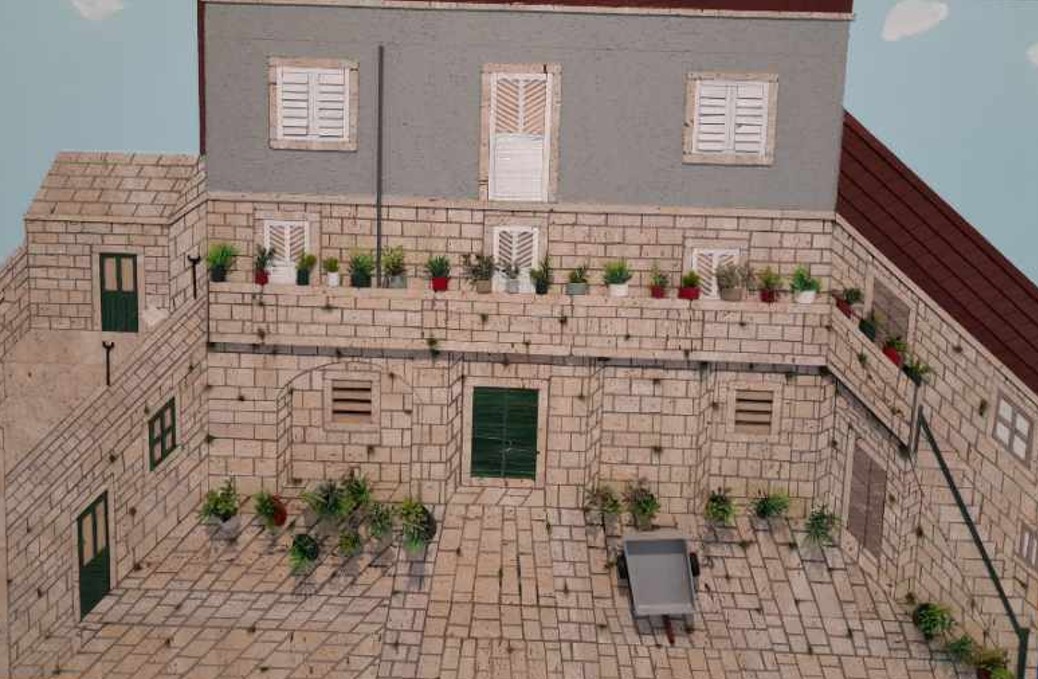
Frano’s family home held by generations since it was founded. As the third house built in Blato since the village was founded, with one-meter-thick walls, it has withstood the vastitudes of time and calamities of centuries.
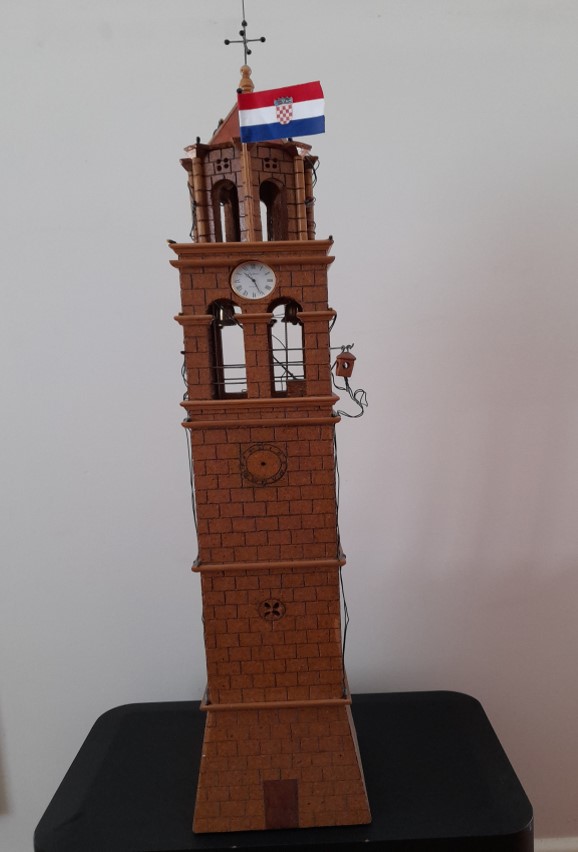
Frano Donjerković remembers the soothing and inviting sound of church bells in Blato. The bell tower was built in the eighteenth century, and its loopholes in the walls suggest that it was also used for defensive purposes. The parish church is situated with a spacious loggia or square. The Our Lady of the Field church has Roman floors that place its beginnings in the fourth century. The remnants of a Roman agricultural estate (Junianum) and other artifacts dating back prehistoric and Illyrian times.
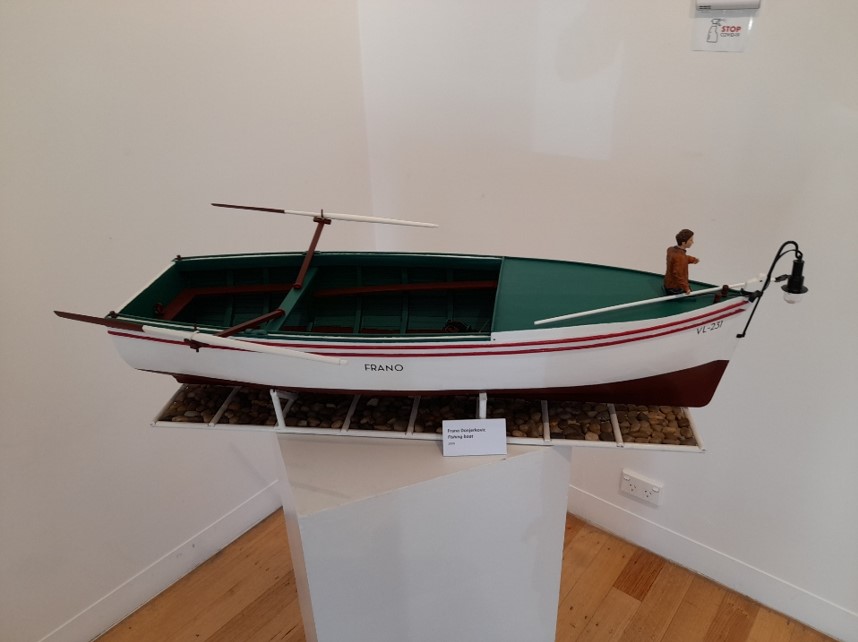
Fishing schooners, boats and ships of cargo are etched in Frano’s memory. The boats are named after family members. The biggest boat took him a year to craft.
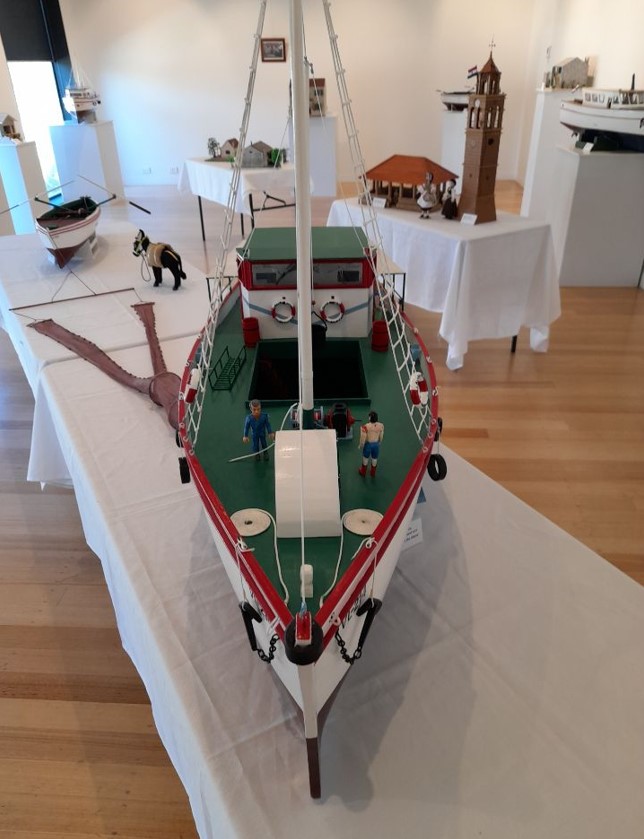
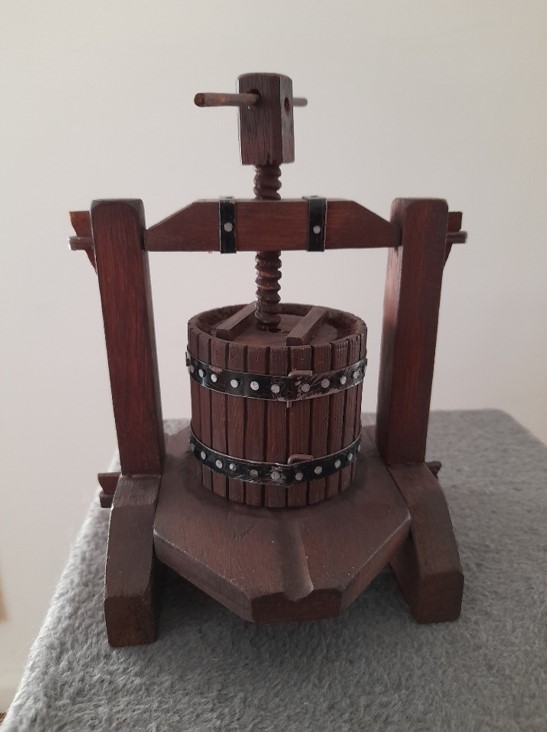
Frano’s family are also masters of winemaking. The first piece of creativity inspired by memories of his home in Croatia is the wine press that his grandfather acquired. This was Frano’s first creation from memory.
Kumpanija: the sword dance of heroes and romantics
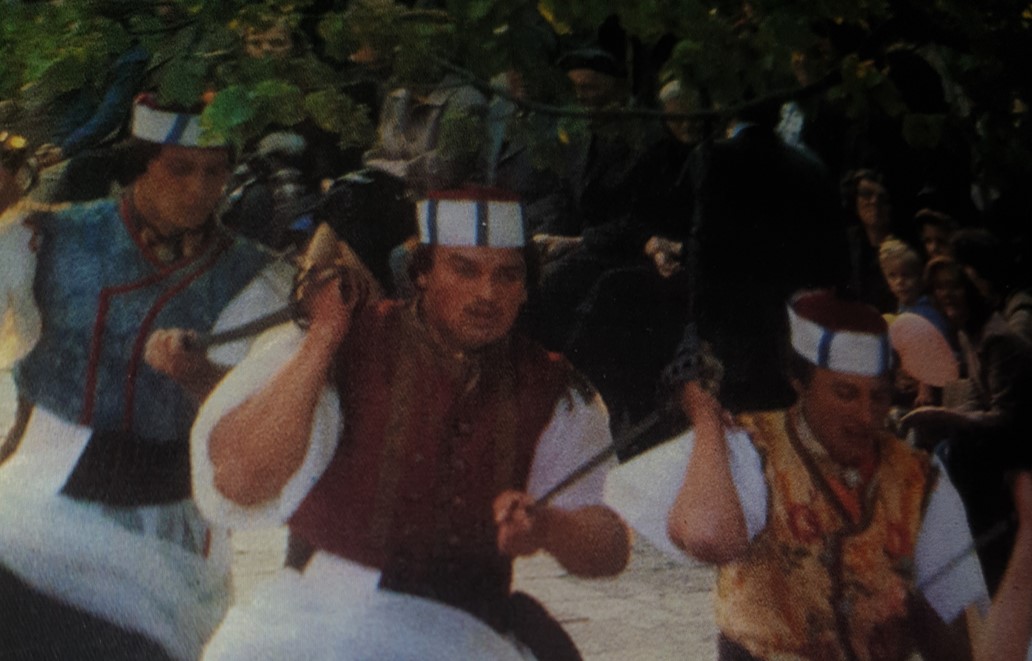
Frano Donjerković performing the “Kumpanija,” a traditional sword dance celebrated in Blato and Vele Luka. As a young man, Frano joined the Knights’ Society Kumpanija (Companions), established as an ensemble in 1927, and is the pride of Blato. The ensemble keeps traditional dances and customs representing a chivalrous confrontation between two armies, with highlights of a sword dance that is accompanied with a menacing drum and harrowing bagpipe. The dance “Kumpanija” or “sword dance” celebrates the success of local armed formations to protect the village and port from pirates and would-be conquerors, which did not have traditional defensive fortifications or walls like many other coastal cities in Croatia’s coastal waters. The dance is wrought with intensity with high-impact sword duels. The “Kumpanija” dancers must have considerable agility, talent, and stamina.
The knights are divided into classes; (barjaktar, captain, kapural, srzetin, buzdonahar) and different parts of the dance (spuz, mostra, tanac, etc). Apart from the sparks flying from the swords, a particularly attractive role is demonstrated by the “alfir” (flag-bearer) and his large Croatian standard, which ends with a dance with the local ladies, called the “tanac.” The sword dance “Kumpanija” takes place in the square (plokata) in front of the Church of All Saints. The main performance takes place on 28 April every year to mark the Day of Blato, which is also the Feast of Saint Vincenca, and on 15 August, feast of the Assumption of the Blessed Virgin Mary. The “Kumpanija” also frequently performs across Croatia and Europe and can be seen during the height of the tourist season as a regular attraction.
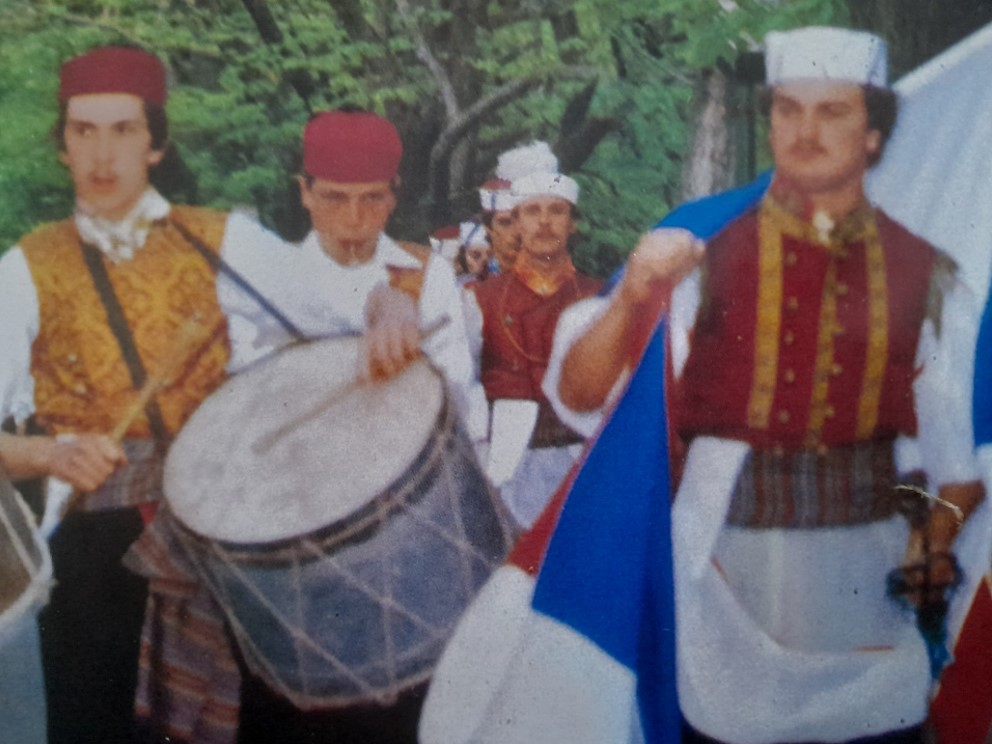
|
Stand Here, Captain! |
By Mirjana Mrkela (story) and Niko Barun (illustrations) |
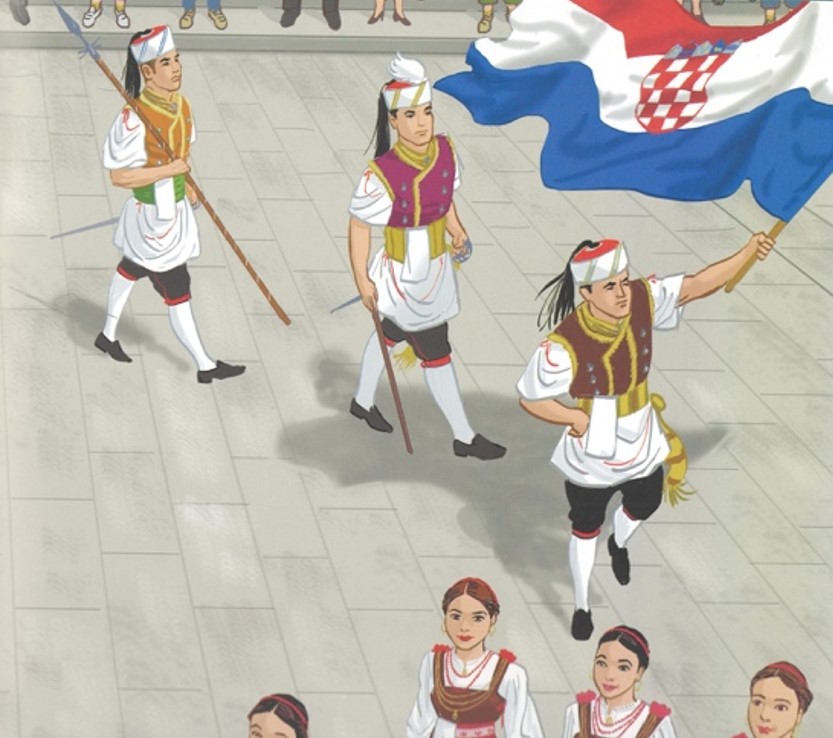 |
The Blato Public Library and Knights’ Society Kumpanija, Blato in 2019 published a book on the sword dance by Mirjana Mrkela (story) and Niko Barun (illustrations). The book was published in both Croatian and English, with considerable detail on the story of each stage of the dance, including 36 beautifully illustrated pages under the title “Stand Here Captain! Information about acquiring the illustrated book can be obtained by writing to [email protected]. |
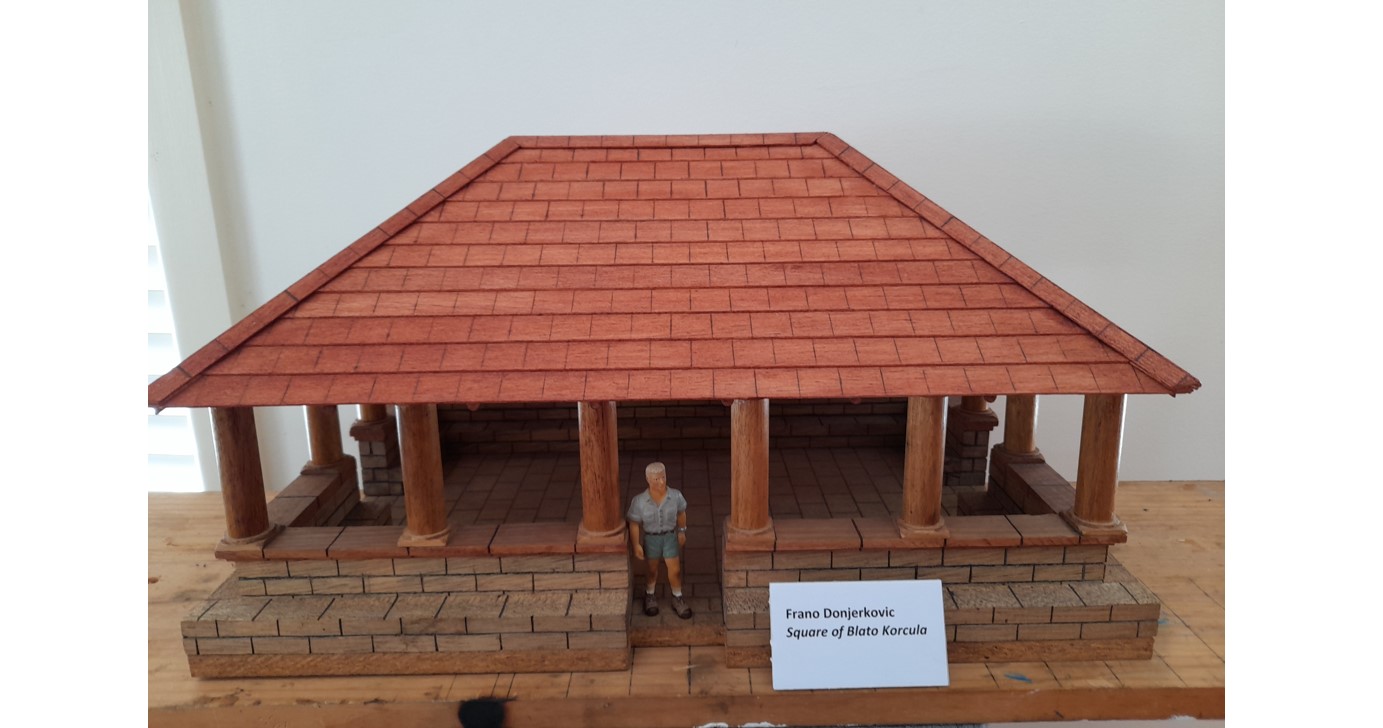
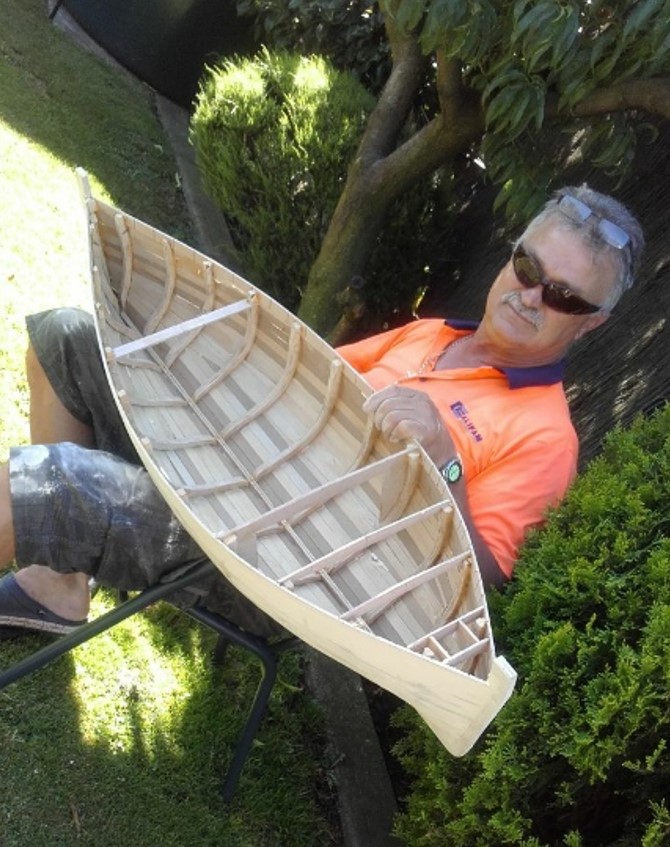
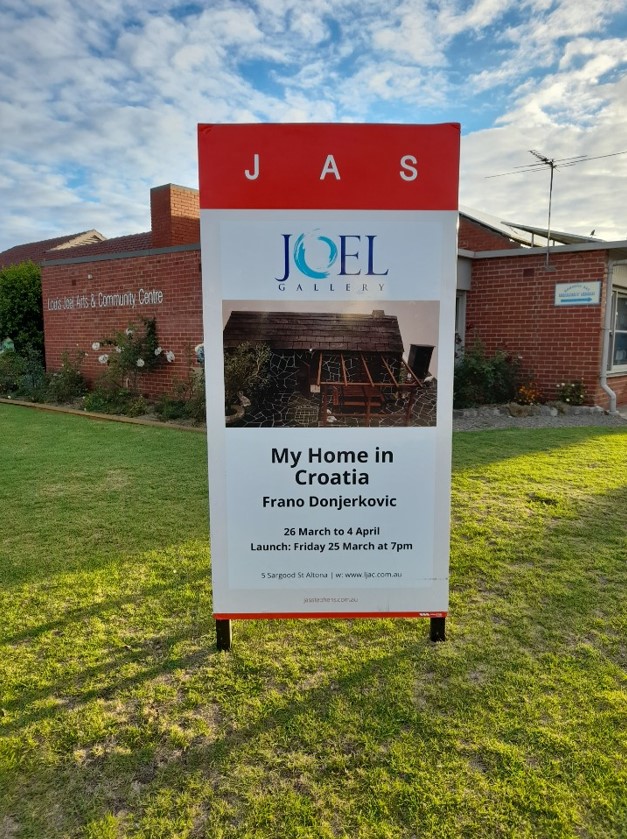
For more, make sure to check out our dedicated Croatian Diaspora section.

